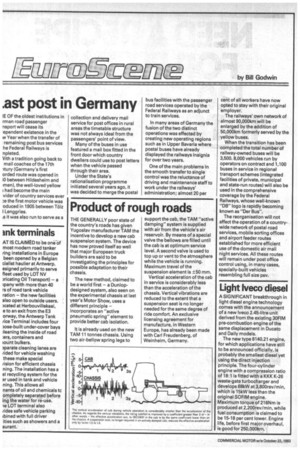.ast post in Germany •
Page 22

If you've noticed an error in this article please click here to report it so we can fix it.
IE OF the oldest institutions in rman road passenger nsport will cease its ependent existence in the w Year when the transfer of remaining post bus services he Federal Railways is npleted.
Vith a tradition going back to mail coaches of the 17th itury (Germany's first orded route was opened in l0 between Hildesheim and men), the well-loved yellow ; had become the main vider of country services ever the first motor vehicle was educed in 1905 between Tolz I Lenggries.
.s it was also run to serve as a collection and delivery mail service for post offices in rural areas the timetable structure was not always ideal from the passengers' point of view.
Many of the buses in use featured a mail box fitted in the front door which country dwellers could use to post letters when the vehicle passed through their area.
Under the State's rationalisation programme initiated several years ago, it was decided to merge the postal bus facilities with the passenger road services operated by the Federal Railways as an adjunct to train services.
In many areas of Germany the fusion of the two distinct operations was effected by creating new operating regions such as in Upper Bavaria where postal buses have already displayed the railways insignia for over two years.
One of the main problems in the smooth transfer to single control was the reluctance of driving and maintenance staff to work under the railways' administration; almost 20 per cent of all workers have now opted to stay with their original employer.
The railways' own network of almost 90,000km will be enlarged by the addition of 50,000km formerly served by the yellow buses.
When the transition has been completed the total number of railway-owned buses will be 3,500.8,000 vehicles run by operators on contract and 1,100 buses in service in regional transport schemes (integrated facilities of private, municipal and state-run routes) will also be used in the comprehensive coverage by the Federal Railways, whose well-known "DB" logo is rapidly becoming known as "Der Bus".
The reorganisation will not affect the operation of a countrywide network of postal road services, mobile sorting offices and airport feeder routes established for more efficient use of the domestic air mail night services. All these routes will remain under post office control using, in many cases, specially-built vehicles resembling full size psv.
































































































